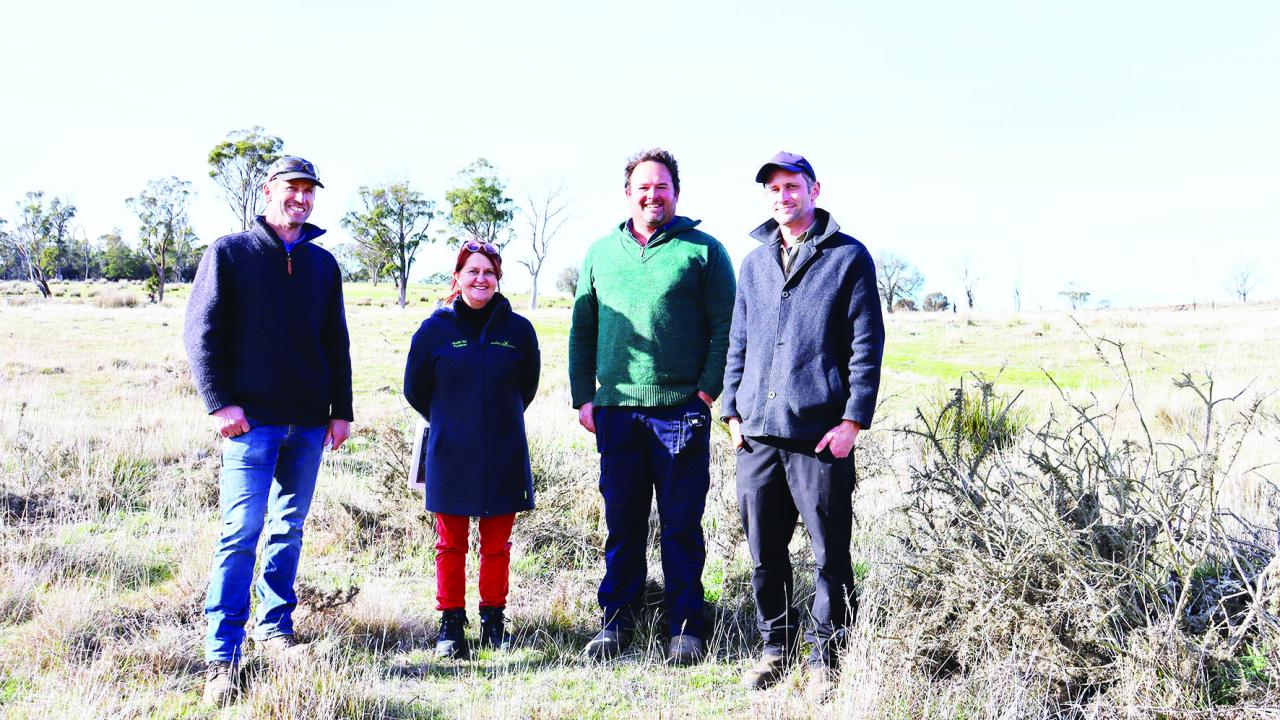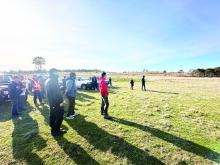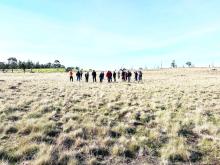War on gorse curse

A WEED management field day was held at Maitland property last week to share insights made from the Northern Midlands Gorse Project.
Supported by the Weed Action Fund and Enviro-dynamics, the event highlighted successful strategies and learnings in controlling gorse across three neighbouring farms in central Tasmania.
Three farmers, John Atkinson from Maitland, Richard Burbury from the Isis Valley, and George Gatenby from Bicton Farm – all recipients of the Weed Action Fund – shared their experiences during the informative sessions.
Together, they tackled gorse using a landscape-based approach, covering a total of 300ha over three years.
The initiative received $150,000 from the State Government, which was matched by the farmers and used over three years.
The field day attracted stakeholders including Red Hot Tips who support landowners with controlled burns, Sustainable Timbers Tasmania and Biosecurity Tasmania. Approximately 15 landowners attended showing their interest and support for gorse control.
Mr. Gatenby, who runs merino sheep and irrigated cropping, said the field day was important for sharing the knowledge gained in gorse management over the last three years.
“Part of our commitment to the weed action fund was to do multiple methods of gorse control and release information about what we’ve learned and how we’ve spent the money because no work has been done on a research level of gorse control since the 1990s.”
“This fund allowed us to treat areas of gorse that we probably couldn’t achieve before.”
The funding enabled innovative methods such as helicopter spraying with Grazon, which Mr. Gatenby noted would have been prohibitively expensive otherwise.
He also said that effective gorse management required ongoing financial commitment beyond initial funding.
“Gorse is not a short-term problem: it’s not a three-year weed.” Mr Gatenby said, adding that it required a lifetime of control efforts.
He pointed out that current chemical treatments were effective but getting more expensive.
“The biggest limitation has been time and money because the control methods are quite labour intensive.”
Reflecting on the project, he praised the grant for providing direction and prioritising weed control efforts.
“As with all grants, there’s a high level of admin but, overall, it’s been a terrific project that we’d like to see continue.”
A shared goal of the farmers was the importance of minimising environmental impact, particularly in areas with native grasses and natural clovers and to push gorse to less arable grounds.
“The goal is to get the native grasses to out-compete any gorse regrowth and get those native grasses back.”
Mr Gatenby said that benefits in the environment were for all to share but too often the costs were put on to landowners to carry.
He advocated for a community-based control method to share the costs and benefits of the environmental stewardship.
He said that gorse lasted 25 years, dominated the landscape, grew very quickly and provided habitat for vermin and choked out native species and ruined biodiversity.
Mr Gatenby inherited gorse on his property that has been there through generations.
One of his concerns about generational farming was the potential that gorse would spread further into the bush, and if it got onto crown land, no one would be able to control it.
Various control techniques were discussed on the day ranging from mechanical digging along creek lines to hand spraying, controlled burning and aerial spraying on open range gorse.
The diversity of methods showed that combating gorse required experimentation with each approach tailored to specific environmental and economic considerations.
“Our method of control historically has been burning which is a great method, but the only downfall is a little bit of discoloration in our merino wool but overall it’s quick and easy,” Mr Gatenby said.
However, the downside of burning was losing regrowth of native trees.
Among the methods discussed, boom spraying was said to cover large areas efficiently.
“Boom spraying with a 24m boom with a 3500L water tank that can reach heights of 2.5m and spray the gorse was effective.
“As far as cost-effectiveness goes, we didn’t use the digger again because it was just so expensive and can disturb the soil and cause erosion along creek lines.”
During the event it was recognised that gorse has a couple of benefits despite its invasiveness. It provides shelter for lambing and during shearing or bad weather, so some farmers maintain gorse for that purpose.
As the event concluded, landowners reflected and shared their experiences surrounding gorse and weed management and the three participants reiterated their commitment to sustainable farming practices and encouraged community-led initiatives in weed management.



Add new comment
Comments
Removal of gorse
Well written article explaining the environmental damage and the animal protection of this unsightly weed.
Good work keep up the great work.